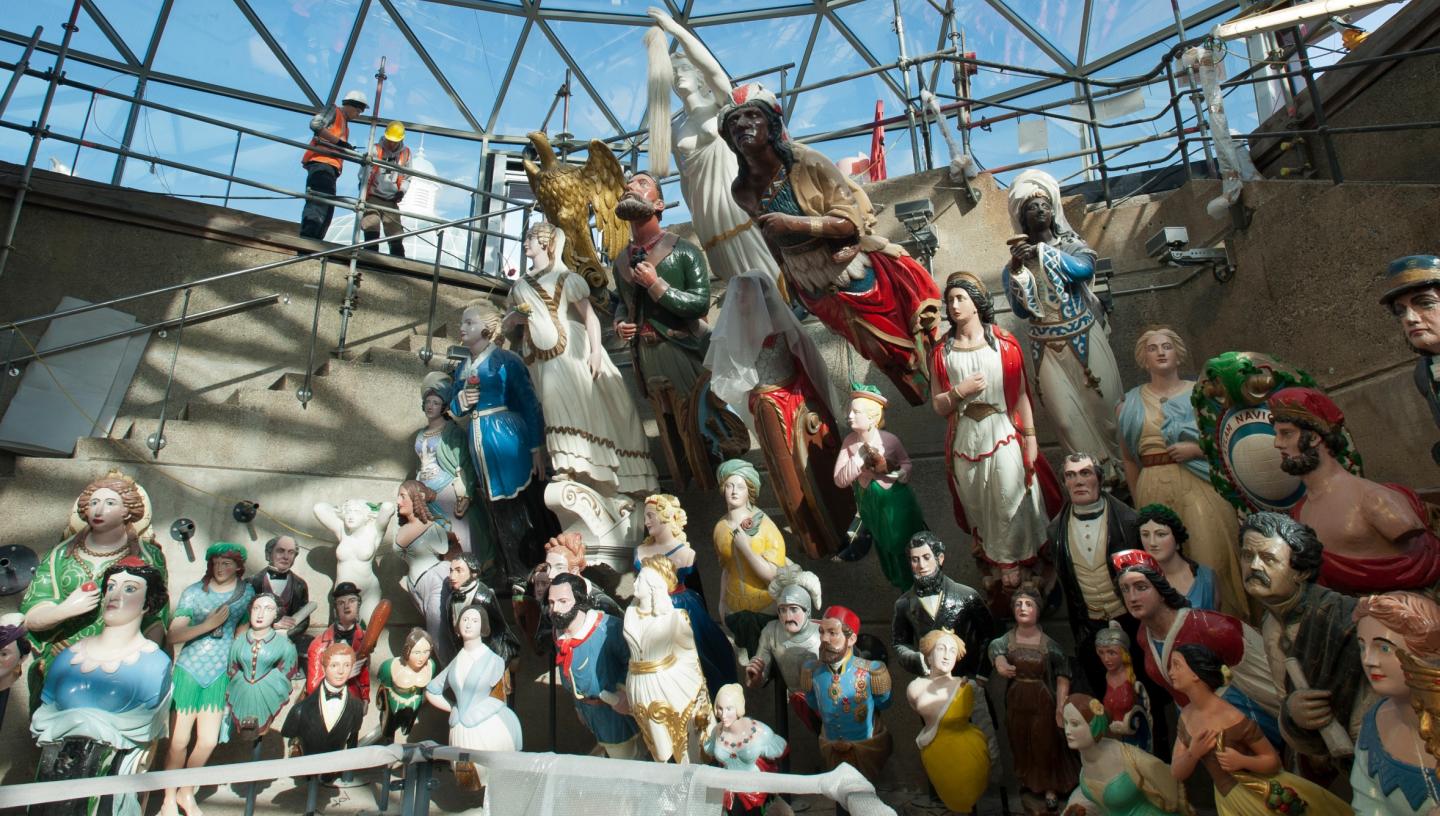
Essential Information
| Location |
Cutty Sark
|
|---|---|
12 May 2016
From the mid-19th century onwards, figureheads on Merchant Navy vessels diversified and a much broader range of characters were chosen by shipowners to be depicted as their vessels’ figureheads. A selection from the Long John Silver Collection on display at Cutty Sark, demonstrates this diverse range.
Tantivy
The character depicted by this figurehead is a hunter, wearing a red jacket and riding boots, holding a fox's brush in his right hand. His name, Tantivy, is a hunting cry. The figurehead once adorned a clipper schooner built in 1848 in Yarmouth by Fellows and Company for S. Smith and Sons. It was considered to be one of the fastest vessels out of Yarmouth. The ship was wrecked on Kessingland Beach, south of Lowestoft in 1880s.
Old Goody
This figurehead came from a 174-ton wooden schooner built by Paine at Sandwich, for E. Rigden of Whistable. The figurehead depicts a housewife, 'Goody' being an abbreviation of goodwife.
Eagle
This impressive figurehead of an eagle came from a barque built in Bristol in 1856 by Charles Hill and Sons. It was later sold and became a coal hulk in Gibraltar.
Maria Christina
The figurehead is thought to represent Maria Christina (1626-1689) who was Queen regnant of Sweden from 1632 to 1654. She abdicated her throne and converted to Catholicism, and spent her later years in France and Rome. She became a leader of theatrical and cultural life of Rome, where she is buried in St Peter's Basilica. The figurehead once adorned a wooden schooner of 106 tons from Skelinge in Sweden, built in 1864. It was wrecked on Doom Bar, off Padstow in 1930.
Bertha Marion
This figurehead comes from a 540-ton composite barque built in Sunderland in 1864. It was named after the daughter of the first owner, Bertha Marion Coghill and is in all likelihood a portrait of her. The ship was sold in 1879 to Trinder Anserson who re-named her Aralura, and then sold again in 1890, this time to a Norwegian company and the ship was christened Beda after a Norwegian goddess.